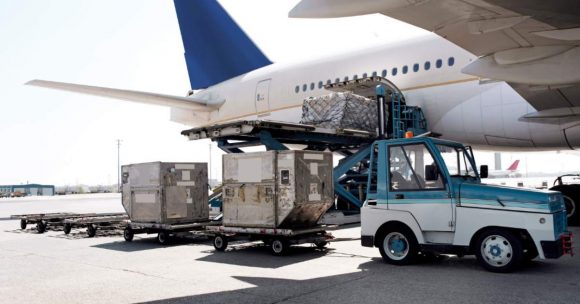Despite flat growth in November and December, the global air cargo market is on course for surprising double-digit growth in 2024, a Xeneta report shows.
Xeneta is an ocean and air freight rate benchmarking and market analytics platform.
New data from Xeneta reveals a steady rise, with October volumes up 11% and spot rates climbing 19% year-on-year—signs of a maturing market balancing buyer and seller demand for cargo capacity.
Why does this matter? Double-digit growth signals potential opportunities for businesses that rely on air cargo—whether they’re shippers, logistics providers, or industries like e-commerce and manufacturing.
Companies can plan for capacity needs, negotiate better rates, and capitalize on increased demand.
Air cargo defies disruptions: Heads for strong 2024 finish
In the first month of 2024, Locate2u reported that shippers were switching to airfreight instead of sea freight. This move was to mitigate the effects of the Red Sea crisis.
In April, a DHL report showed a soaring demand for airfreight.
In a year marked by constant, unexpected disruptions, the air cargo industry is set to end 2024 on a high note, far exceeding initial growth forecasts of just 1-2%.
Overcoming the challenges, shippers, freight forwarders, and airlines have adapted swiftly, showcasing what Xeneta’s chief airfreight officer, Niall van de Wouw, calls “the industry at its best.”
He adds that the frequency and diversity of ‘storms’ coming the way of the air cargo industry in 2024 mean this year could have been quite messy. “The industry has found a way to navigate these challenges,” says van de Wouw.
Has the industry’s flexibility and relationship-focused approach finally paid off?
Van de Wouw highlights that the groundwork and adaptability are showing results, with a clear shift toward maintaining strong relationships over maximizing every last dollar of revenue.
October rates hold strong: Xeneta highlights
- Rates remain Elevated: October’s global air cargo spot rate stayed high, averaging $2.68 per kg, just slightly below the year’s peak.
- Growth momentum slows: After a 25% surge in September, growth eased in October due to a high comparison base from 2023.
- Steady month-on-month rates: October’s spot rate showed little change from September, indicating stability after recent gains.
- Demand outpaces supply: Year-on-year, global demand rose by 11%, while cargo capacity grew by only 2%, supporting elevated rates.

Air cargo capacity shifts balance global supply and demand
As air cargo capacity shifts to high-revenue routes, global supply and demand are finding a new balance.
Here’s a snapshot of how key corridors and secondary markets are adapting to the latest industry movements according to Xeneta’s report:
- Revenue-driven capacity shifts: Air cargo capacity often moves to high-revenue corridors, helping balance supply and demand across key routes.
- Stable spot rates from Asia to North America: Spot rates from Northeast Asia to North America held steady in October, cooling down after a September surge due to extreme weather and China’s Golden Week.
- Flat Asia-to-Europe market: Spot rates on the Northeast Asia to Europe corridor also remained stable, despite fewer passenger flights due to uncompetitive routings. Increased freighter capacity offset any reduction, adding balance to the market.
- Growing rates in secondary routes: With capacity shifts from the Americas to Asia, freight rates from South America to Europe, including return routes, climbed significantly month-on-month.
- Slight dip in Middle East and central Asia to Europe rates: Spot rates between the Middle East/Central Asia and Europe decreased by 3% as civil unrest in Bangladesh eased and weather conditions stabilized.
Mature air freight market poised for gains
What is Xeneta noticing? The air cargo market highlights the growing ability of shippers, freight forwarders, and airlines to handle disruptions and manage high volumes without the chaos of spiraling rates.
“There is a maturity in the market which stems from airlines being better prepared this year as well as there being clearer rules in place between shippers and forwarders, and forwarders and airlines. This is good for relationships – and good for consumers,” says van de Wouw.
Are air cargo rates finally stabilizing?
The chief airfreight officer highlights that while rates remain higher than last year, they’re staying manageable despite strong demand, higher load factors, and limited supply growth.
The industry has learned valuable lessons, and both sides are now aiming for fair, sustainable rates. “This puts air cargo demand safely on course to report double-digit growth in 2024, and not even zero growth in November or December is going to disrupt this, says van de Wouw.
What’s next for air cargo market maturity?
The next level, says van de Wouw, is rate indexing between shippers and forwarders, using a neutral third-party to adjust rates throughout contract terms.
He explains that indexing will benefit everyone involved, building confidence for long-term contracts. This will be a natural step forward as the market reaches new levels of balance and preparedness.
NOW READ: Free shipping ‘non-negotiable’ for consumers: FedEx study
Photo Credit: Canva
About the author
Sharl is a qualified journalist. He has over 10 years’ experience in the media industry, including positions as an editor of a magazine and Business Editor of a daily newspaper. Sharl also has experience in logistics specifically operations, where he worked with global food aid organisations distributing food into Africa. Sharl enjoys writing business stories and human interest pieces.










